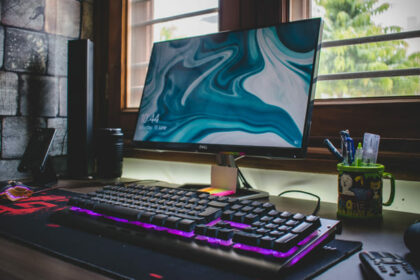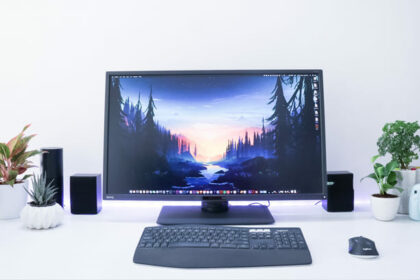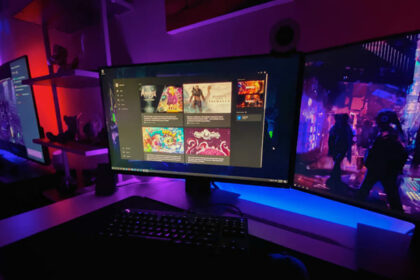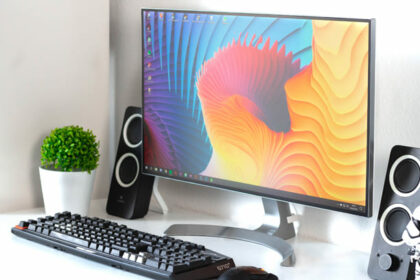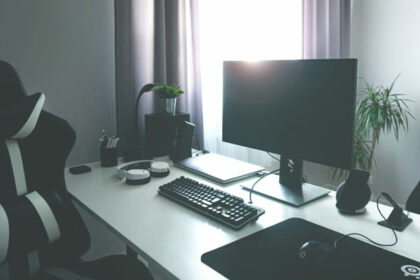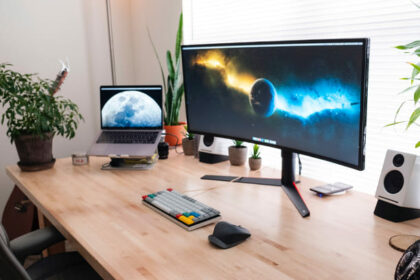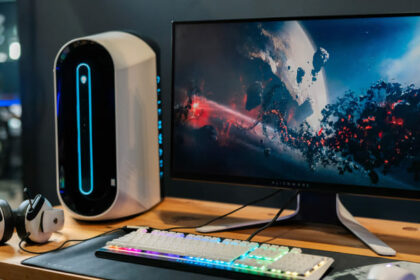When it comes to gaming, a higher monitor refresh rate typically means a better and smoother gaming experience.
If you are currently playing on a 60 Hz monitor and can’t really afford to fork out hundreds of dollars to upgrade, one of the options to better the performance of your display is to overclock it.
In this guide, I will be showing you everything from how to overclock your monitor’s refresh rate to how you can check if it was successful, checking if it’s even possible and covering all the risks involved.
What is Refresh Rate?
To put it simply, if you have a 60Hz monitor, the image on the screen will refresh 60 times every single second. Likewise, if you have a 75 Hz monitor, the image will refresh 75 times per second, and for 144 Hz, the image will refresh 144 times per second.
Generally speaking, the higher the refresh rate of your monitor, the more smooth and responsive everything feels, which can ultimately have a huge effect if you are a gamer.
With a higher refresh rate, things may appear to load more quickly on your screen too — which often leads to a greater “peaker’s advantage” in online FPS games, where one person gets a split second of seeing an enemy before appearing on the other’s screen.
Can I Overclock My Monitors Refresh Rate?
Maybe, but it’s risky. Whether overclocking of your monitor is possible solely depends on your specific panel. Even if two monitors are exactly the same, the display panels inside may not be made equally, meaning that it might work for one but not the other.
As an example, I am currently using the AOC G2590FX 24.5″ 144 Hz monitor. People claim that it’s extremely hard to overclock it. Some reports even say that they have been successful, but only managing to bring it up to 145 Hz, which is not noticeable. So for me, that is not worth the risk at all.
Note: Before you do anything, check your panel specs first as all panels are made differently, and some manufacturers may have even applied a factory overclock already. If that is the case for your monitor (not that you will know), the risks are much higher if you try to push the Hz even higher than what they already are.
Overclocking the Refresh Rate of Your Monitor – Step by Step
Overclocking your monitor is actually a pretty simple and straightforward process. You can either use a third-party tool like CRU, or use software from AMD, Nvidia, or Intel. They are all free, so pick the best one for you.
Here, I will show you how to overclock your monitor using Custom Resolution Utility.
CRU is one of the old methods of monitor overclocking. However, it may not be compatible with all GPUs or integrated graphics cards. It does, however, do a pretty decent job with AMD GPUs. Once you install the software:
- Open CRU.
- Then, you will see two boxes called detailed resolution and standard resolutions.
- Go for detailed resolution and select add.
- Select timing and change the setting to LCD standard.
- Then, you need to modify the refresh rate to a number above the standard. A good number to aim for is 5 Hz above the standard of your monitor.
- Then, click ok.
- After all this is done, simply reboot your PC.
After your PC loads back up, you will need to change the refresh rate in Windows 10. Those are steps that apply to every other method of monitor overclocking.
- Right-click with your mouse on your desktop screen and click on display settings.
- Then, click on advanced display settings.
- Go down and click on display adapter properties.
- After that, under the monitor tab, click the desired refresh rate that you want from the drop-down menu.
This is where the moment of truth really lies. If the overclocking has worked, your monitor won’t go black. On the other hand, if you went a little too high on your desired overclock, the screen display either won’t display anything or go back to its old settings after 15 seconds.
How to Verify Your Monitors Overclock
When it comes to testing whether or not your overclocking attempts were successful, there are many online tests that you can run. For example, a great website would be https://www.testufo.com/frameskipping.
This website can check your refresh rate at the time of testing pretty much automatically. So, if you see an increase in the Hz beyond the factory standard for your monitor, the overclocking has worked. Note that the change might not be significant and that it can only go up by 3 or 4 points.
Do It at Your Own Risk
Just like overclocking your CPU, overclocking your monitor also brings a number of risks. While it should be safe enough for you to play around with overclocking your monitor, there is a small chance that it could quite literally blow up.
This can not only harm you, but your monitor will be practically useless as you would have fried everything within it, perhaps including the display.
You should also keep in mind that overclocking at different resolutions can also make a difference. For example, an overclock might work at 720p but not when it comes to 1080p.
Also, before you overclock, make sure that you know whether or not your monitor can actually run at higher Hz anyway and all you need is a cable.
I covered an article that answers why your 144Hz monitor is running at 60Hz not so long ago. This applies to malfunctions with pretty much any Hz.
Take everything from above and decide for yourself what the best next move is.

